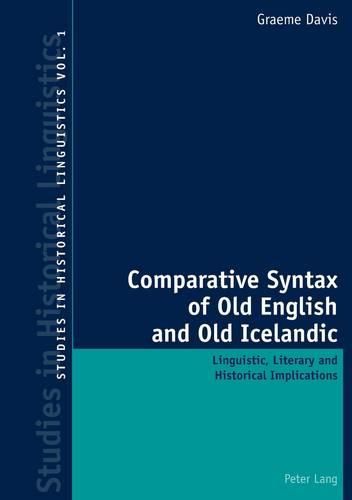Readings Newsletter
Become a Readings Member to make your shopping experience even easier.
Sign in or sign up for free!
You’re not far away from qualifying for FREE standard shipping within Australia
You’ve qualified for FREE standard shipping within Australia
The cart is loading…






Study of the syntax of Old English and Old Icelandic has for long been dominated by the impressions of early philologists. Their assertions that these languages were free in their word-order were for many years unchallenged. Only within the last two decades has it been demonstrated that the word-order of each shows regular patterns which approach the status of rules, and which may be precisely described. This book takes the subject one step further by offering a comparison of the syntax of Old English and Old Icelandic, the two best-preserved Old Germanic languages. Overwhelmingly the two languages show the same word-order patterns - as do the other Old Germanic languages, at least as far as can be determined from the fragments which have survived. It has long been recognised that Old English and Old Icelandic have a high proportion of common lexis and very similar morphology, yet the convention has been to emphasise the differences between the two as representatives respectively of the West and North sub-families of Germanic. The argument of this book is that the similar word-order of the two should instead lead us to stress the similarities between the two languages. Old English and Old Icelandic were sufficiently close to be mutually comprehensible. This thesis receives copious support from historical and literary texts. Our understanding of the Old Germanic world should be modified by the concept of a common Northern Speech which provided a common Germanic ethnic identity and a platform for the free flow of cultural ideas.
$9.00 standard shipping within Australia
FREE standard shipping within Australia for orders over $100.00
Express & International shipping calculated at checkout
Study of the syntax of Old English and Old Icelandic has for long been dominated by the impressions of early philologists. Their assertions that these languages were free in their word-order were for many years unchallenged. Only within the last two decades has it been demonstrated that the word-order of each shows regular patterns which approach the status of rules, and which may be precisely described. This book takes the subject one step further by offering a comparison of the syntax of Old English and Old Icelandic, the two best-preserved Old Germanic languages. Overwhelmingly the two languages show the same word-order patterns - as do the other Old Germanic languages, at least as far as can be determined from the fragments which have survived. It has long been recognised that Old English and Old Icelandic have a high proportion of common lexis and very similar morphology, yet the convention has been to emphasise the differences between the two as representatives respectively of the West and North sub-families of Germanic. The argument of this book is that the similar word-order of the two should instead lead us to stress the similarities between the two languages. Old English and Old Icelandic were sufficiently close to be mutually comprehensible. This thesis receives copious support from historical and literary texts. Our understanding of the Old Germanic world should be modified by the concept of a common Northern Speech which provided a common Germanic ethnic identity and a platform for the free flow of cultural ideas.